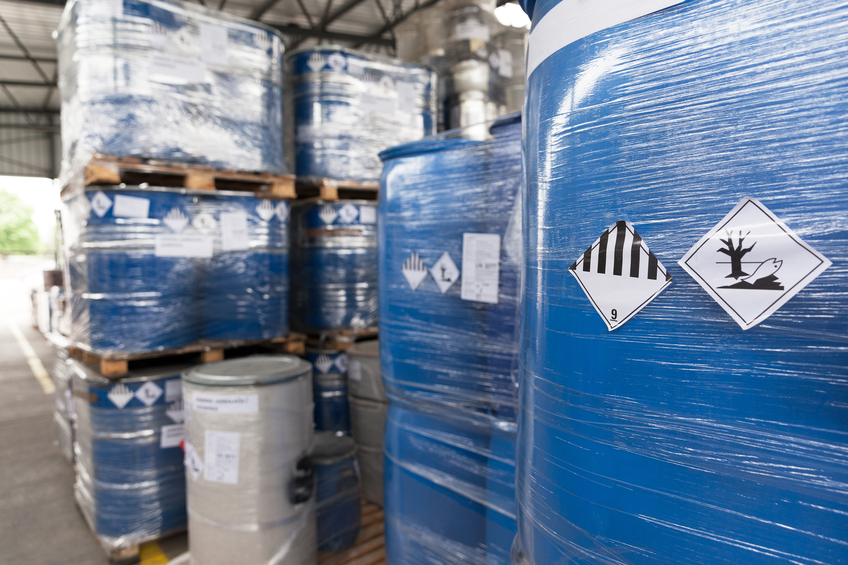What should you do if you think your facility poses security risks under the Department of Homeland Security’s (DHS) Chemical Facility Anti-Terrorism Standards (CFATs)? First of all, take a breath and step back. Today we will review DHS’s plans to improve how it assesses CFAT facility risks, and tomorrow we will offer five steps to help you determine if your facility could be targeted as high risk.
 |
Note. There are over 300 chemicals that the DHS have designated as chemicals of interest (COIs) under the CFATS program. COIs are found in 6 CFR 27 Appendix A and are also known as Appendix A COI.
Step Back
The DHS has temporarily suspended the requirement to submit a Chemical Security Assessment Tool (CSAT) Top-Screen and Security Vulnerability Assessments (SVA) while the Department is improving the tiering methodology process. According to the DHS, the improved tiering method will require the submission of information that differs in some respects from the information that has previously been collected.
Note. The CFATS focus specifically on security at high-risk chemical facilities, aka chemical facilities of interest. The DHS determines a facility’s initial risk profile by requiring facilities in possession of specific quantities of specific chemicals of interest to complete a preliminary risk assessment, known as a Top-Screen.
Facilities initially determined by the DHS to be high-risk must complete and submit an SVA. If the DHS makes a final determination that a facility is high-risk, the facility must submit a Site Security Plan for DHS approval or an Alternative Security Program that includes security measures to meet applicable risk-based performance standards established by the DHS.
Three-Step Transition Process
The DHS is transitioning from the existing CSAT applications to a CSAT 2.0 process. The Department has found that the existing process is very complex and has caused a lot of effort and confusion for facilities that may be required to submit a Top Screen and then possibly an SVA. The three steps are:
- The temporary suspension, effective July 20, 2016, of the requirement for CFATS chemical facilities of interest to submit a Top-Screen and an SVA. This suspension is designed to help chemical facilities of interest avoid expending time and resources on Top-Screen and SVA submissions during the transition to CSAT 2.0. Covered chemical facilities may continue to submit new or revised Site Security Plans (SSPs) and Alternative Security Programs (ASPs) in lieu of an SSP using the current CSAT SSP application up until the date of transition to CSAT 2.0.
- The DHS will replace the current CSAT Top-Screen, SVA, and SSP applications with CSAT 2.0 (i.e., the revised CSAT Top-Screen, SVA, and SSP applications) in September 2016. Soon after transitioning to CSAT 2.0, the DHS is planning a phased approach. The Department will begin individually notifying chemical facilities of interest to submit a Top-Screen using the revised CSAT Top-Screen application. Notification will be sent to facilities that either:
- Have previously submitted a Top-Screen with a COI above the STQ, or
- The Department has reason to believe have COI at or above the STQ.
- The DHS will reinstate the Top-Screen and SVA submission requirements on October 1, 2016.
Will You Be Required to Submit a Top-Screen?
After the transition to CSAT 2.0, the DHS will begin individually notifying chemical facilities of interest, which will include facilities previously determined not to be high-risk, to submit a Top-Screen using the revised CSAT Top-Screen application. These letters will be issued over the course of several months.
If you receive a notice to submit a Top-Screen and you don’t possess any COI at or above the STQ and as applicable, at or above the minimum concentration specified in Appendix A, you must notify the DHS as to why you are not submitting a Top-Screen.
According to the DHS, it is common practice to submit a revised Top-Screen with no COI selected if you no longer possess any COI at or above the STQ and at or above the minimum concentration specified in Appendix A. When (if) the DHS confirms the information, you will no longer be considered a high-risk chemical facility.
Facilities that Will Not Be Required to Submit a Top-Screen
There are four categories of facilities that will not be required to submit a Top-Screen:
- Agricultural production facilities and other extensions. The DHS extended the requirements for some facilities to submit a Top-Screen. This new method does not change these extensions. Facilities that have received these extensions include farmers and other agricultural end users.
- Chemical facilities of interest with reportable COI that is present in a gasoline mixture.
- Facilities originally excluded under the CFAT law. These include facilities regulated under the Maritime Transportation Security Act; public water systems; water treatment works; facilities owned and operated by the U.S. Department of Defense or the U.S. Department of Energy; and facilities regulated by the Nuclear Regulatory Commission.
- Untiered facilities that previously notified the DHS they had no reportable COI. Such facilities are expected to submit a Top-Screen if they have come into possession of a reportable amount of any COI since submitting their previous Top-Screen.
If you fall into one of these categories and you receive a notification to submit, contact the DHS.
Takeaway
Now that the DHS has surfaced with changes to how it is determining which chemical facilities are high risk, it is very timely to figure out if you can change your inventory and eliminate particular chemicals or bring them under the STQ.
Tune into tomorrow’s Advisor for five steps to help you determine if your facility could be targeted as high risk and subject to submitting the initial Top-Screen survey to the DHS.
